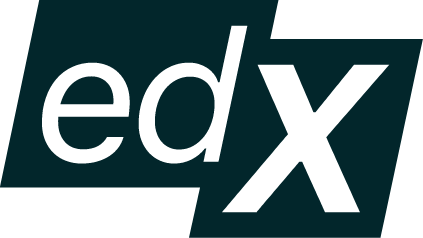
The hiring process for technical positions differs from non-technical positions in that they often have a technical screening. It can initially sound intimidating, but with practice, you will gain a positive outlook on the opportunity to show off your technical skills.
In this guide, you learn how to prepare for various formats to feel confident in your next technical screening.
This guide is a complete and in-depth look into technical screenings. Read straight through, or use the agenda below to jump between topics.
- What is a technical screening, and what are the most common types?
- Why do employers care about technical screenings?
- How do I prepare for technical screenings?
- How do I shine during a technical screening?
What is a technical screening?
A technical screening is a step in the hiring process in which the candidate’s technical skills are assessed. They are common in the tech field, where many positions require a certain level of technical ability. Technical skills may include programming skills, the ability to use a specific software or platform, or technical knowledge.
Employers use many formats to assess a candidate’s technical skills. Let’s review the four most common formats: the live technical interview, online technical assessment, whiteboard interview, and take-home assignment.
During a live technical interview, the candidate responds to technical questions in real-time. The questions may require the candidate to solve a puzzle, tell a story, or discuss a certain technology.
Example questions
- Tell me about a project you developed using React.
- What are modules and packages in Python?
- How can you cut a cake into eight equal pieces in exactly three cuts?
An online technical assessment is an online test that a candidate completes on their own time. The test is usually delivered via a technical assessment platform that includes an Integrated Development Environment (IDE) for writing code.
Example questions
- Given an array of integers, nums, and an integer target, return indices of the two numbers such that they add up to the target.
- Delete a node at a given position in a linked list.
At a whiteboard interview, the candidate is asked to write code or create a diagram on a physical or virtual whiteboard in front of the employer in real-time.
Example questions
- Print out all the permutations of a string.
- Draw on the whiteboard the design of a project that you have worked on.
- Given an array called A of integers, find the maximum of j-i if A[i] <= A[j].
A take-home assignment is a programming task that the candidate must complete on their own time and submit to the employer. The tasks have limited scope, so a candidate with sufficient experience can complete the task in a few hours.
Example questions
- Build a signup form for a mobile app using React.
- Build a simple app that queries a certain API.
- Given a set of data, make a recommendation on how the company should proceed.
Pro tip:
Technical screenings are very common for tech professionals that are just starting their tech careers. For those with several years of experience, it is likely that your resume experience and projects will speak for themselves, and employers will not require a technical screening. Instead, for experienced tech professionals, employers will focus on understanding your management and systems design skills.
Why do employers care about technical screenings?
During a technical screening, employers evaluate if the applicant has the technical skills that are required for the job. It tells the employer how ready the candidate is to handle the job and if they would need further training.
However, many technical screenings tell the employer much more than this. Employers also use technical screenings to learn about a candidate’s problem-solving, communication, and organizational skills. How the candidate performs during the technical assessment gives the employer valuable insight into what it is like to work with them.
Pro tip:
According to the HackerEarth State of Developer Recruitment Report (2020), the majority of employers prioritize problem-solving skills over code quality and systems design skills when hiring. In short, technical screenings are not just about getting the correct answer. Show off your problem-solving skills during technical screenings by communicating your thought process or adding pseudocode.
How do I prepare for technical screenings?
If you are new to the tech field, technical screenings may feel unfamiliar and scary. Practice and preparation are the best ways to calm your nerves. With practice, you will gain confidence and enhance your skills. The following are a few actions that you can take to set yourself up for success.
Review the skills listed on the job post
Employers are likely to test skills that are necessary for the job. Read the job post and note any technical skills or technologies that are listed. Then review any gaps that you may have in your skill set.
Use online assessment platforms
HackerRank, CodeSignal, Leetcode, and CodeWars are four of many platforms that you can use to build your coding skills and practice answering interview-style questions. These platforms have questions for a wide range of disciplines, including data, front end, back end, and full stack.
Practice common technical screening questions
Start by searching for common questions within your industry by searching phrases like “SQL interview questions” or “front-end developer interview questions” on your favorite search engine. Then practice your responses.
Do mock interviews
The people in your professional network are a great place to source advice because they have likely experienced technical screenings before. Ask your peers, mentors, or career coach to run a mock interview with you and give you feedback.
How do I shine during a technical screening?
Of course, you will do your best to give the correct answers during a technical screening, but what else can you do to shine and show your value? Here are our top tips.
Remember, the interviewer cannot read your mind. To help the interviewer understand how you problem-solve, you must tell them. During live technical interviews and whiteboard interviews, in addition to giving an answer, you should communicate your thought process out loud. In most cases, this is more valuable to the employer than just the answer. They want to know what it is like to work with you!
Pseudocoding, writing notes about your code in natural language, is a great way to communicate your problem-solving and organization skills. Use this strategy in whiteboard interviews, take-home assignments, and online technical assessments.
Pro tip:
Pseudocoding can also help you collect your thoughts and calm your nerves. It is totally appropriate to pseudocode your solution first and then enter your code afterward. In fact, this is something that many industry professionals and alumni recommend.
If you don’t know the answer, tell the interviewer what you DO know. Think of each question as an opportunity to share your skills and value, even if you don’t know the technical answer to the question.
Example:
“I haven’t worked with MySQL, but I know that it is a relational database. I do have experience with other relational databases.”
The people assessing your technical screening will likely be utilizing your code on the job. No one wants to work with code that is messy and confusing. Keep your code clean by using consistent variable naming conventions, appropriate spacing, comments, etc.
Pro tip:
If you are doing a take-home assignment, you may consider including a README file. This will show your organizational skills and communicate your thought process to the employer.



